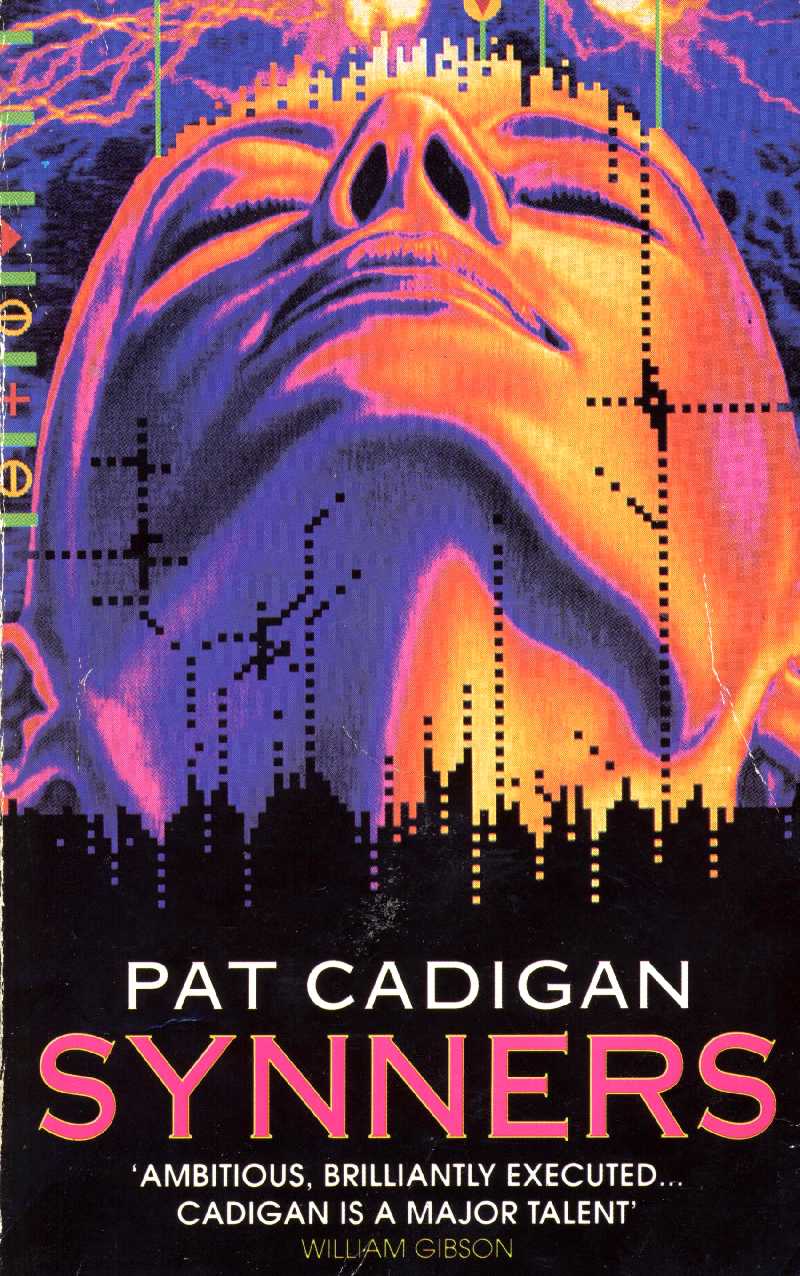Pat Cadigan’s Synners Asks “Who do you love?”
Although published in 1991, the world of Synners and L.A in the late 1980’s still feels relevant today. In fact, it’s more relevant than a lot of cyberpunk, especially among fellow first-wave texts. Unlike many of the books’ peers, it doesn’t feel archaic after thirty years, perhaps because it’s a hard, purposeful look at nostalgia itself.
The way we all kept adding to the nets did exactly that, passed a threshold. It got to the point where the net should have collapsed in chaos, but it didn’t. Or rather it did, but the collapse was not a collapse in the conventional sense.
GridLid automates your car completely; it will even handle traffic for you. Having never driven “manually” before, most people have become fearful of non-automated systems. Entertainment is consumed while the bumper-to-bumper gridlock takes hours for you to arrive at work.
And of course, there is porn for everything. Traffic porn, med porn, war porn, food porn. People get off on most anything that’s packaged as entertainment. And the stuff that isn’t trending now? It’s gone. Viruses are prevalent and just a hazard of the world. Most people don’t know how to get rid of them, having discarded technical know-how for the ease of products automating their lives.
If you can’t fuck it and it doesn’t dance. Eat it or throw it away.
Hackers & Punks Reveal Pat Cadigan’s Street Cred
The book seems hampered by introductions early on, but once it’s done worldbuilding, the experience is undeniably richer for it. What makes Synners so interesting compared to other first-wave cyberpunk novels (aside from the aforementioned worldbuilding) are Cadigan’s post-cyberpunk inflections throughout — intentional or otherwise:
We don’t grieve for what might have been in rock’n’roll. We just keep rockin’ on.
Gina is old enough to remember and venerate “properly,” rock’n’roll music. This lauding of a wave that died out, along with the notion that “punk” is also dead is a consistent through line, reinforced with vivid imagery of music videos and lyrics from songs that just won’t leave her alone. She is stuck in a self destructive loop that is explained by the impulses of the human body, rooting her problems in her humanity. Her pain seems to stem from her embodiment, yet she still wouldn’t change a thing. Hard life, hard love, hard everything.
Visual Mark on the other hand chooses the “datalines” (the Internet) instead. Once a close couple, madly in love, eating each other up—now mature and unable to carry on with their relationship; effectively due to the past. Their mistakes, their nostalgia for them, and the various forms of coping so they don’t ever have to deal with it, all damning of the societal structures in place. Mark unwilling to take true responsibility for them, instead shrugging them off to the system.
Synners Is A First-Wave Cyberpunk Novel That Unveils Post-Cyberpunk via Rock’n’Roll
The main thrust of the book is that “sockets” are invented (despite being often antiquated technology in most cyberpunk novels), and the world dives right in . . . because capitalism. Seeking diversification, a megacorporation releases this new and unsafe technology to the masses.
Meanwhile, Gina hungers for the same power to make music videos “alive” again through the use of this socket technology, possibly stoking everyone’s love for rock’n’roll again, as well as rekindling Mark’s own love for her. Mark allows it to consume him whole.
The idea that the first wave was almost gone, and along with it, cyberpunk as a subgenre, parallels Gina and Mark’s struggle with their past and glory days. How enticing our memories make events that were actually horrible, allowing us to view the wreckage of our lives with rose-coloured glasses. Here, Synners channels the post-cyberpunk in that it seems to critically evaluate the genre, subverting it in a few places:
This ain’t rock’n’roll. It ain’t been rock’n’roll for a long fucking time. This is business, and money, and change for the machines, but it ain’t rock’n’roll.”
Mark himself could represent the genre as it existed in first wave. He is an anti-hero, unlikeable but attractive in non-conformative ways. His past has destroyed parts of him, including some brain damage that makes him even better at using tech to become more than he is now, transcending himself. Leaving “the meat” behind, he has a particular affinity and knack for something because society has fucked him up; the “system” has damaged him. He’s a typical protagonist for early cyberpunk: “I’m not really in there, now. I’m maintaining it, but there’s nobody home. I know it doesn’t happen that way for you, but that’s how it is for me.”
Gina can interact with people just fine, though. She is more-or-less “well adjusted” and chooses to be a voice of dissent. Picking physical conflicts and verbal ones, choosing embodiment every step of the way. How she interacts with people, especially if they are seen by her as being a part of the system that has essentially destroyed the love of her life, Visual Mark, is by being angry. Being a punk. She is a part of an older generation, now been left behind. She’s angry, and tired, and does exactly what she wants when she wants to. The only weakness she has is Mark, the personification of this old way of life that she cannot let go.
The wound in her mouth that would heal if she’d only stop tonguing it.
The way I see it, Synners is a cyberpunk book about examining embodiment, the products of our society and commodification of anything of value. Which power structures benefit and what those wounds might look like in a cyberpunk future, becoming an allegory for the targeting of the unlucky few who grow to be far too many. The book is a reminder of how powerful nostalgia is, a resurgence of it being inevitable, usually by means of advancement in technology. It’s smart and funny at times. It’s very easy to empathize with, and most importantly, the book features good prose mixed with a cyberpunk aesthetic that feels like a prequel while being critical of the genre as it was about to “die.”
Favorite Quotes
Portions of the article above previously appeared on the website, Consuming Cyberpunk. They appear here with permission of their original author.



